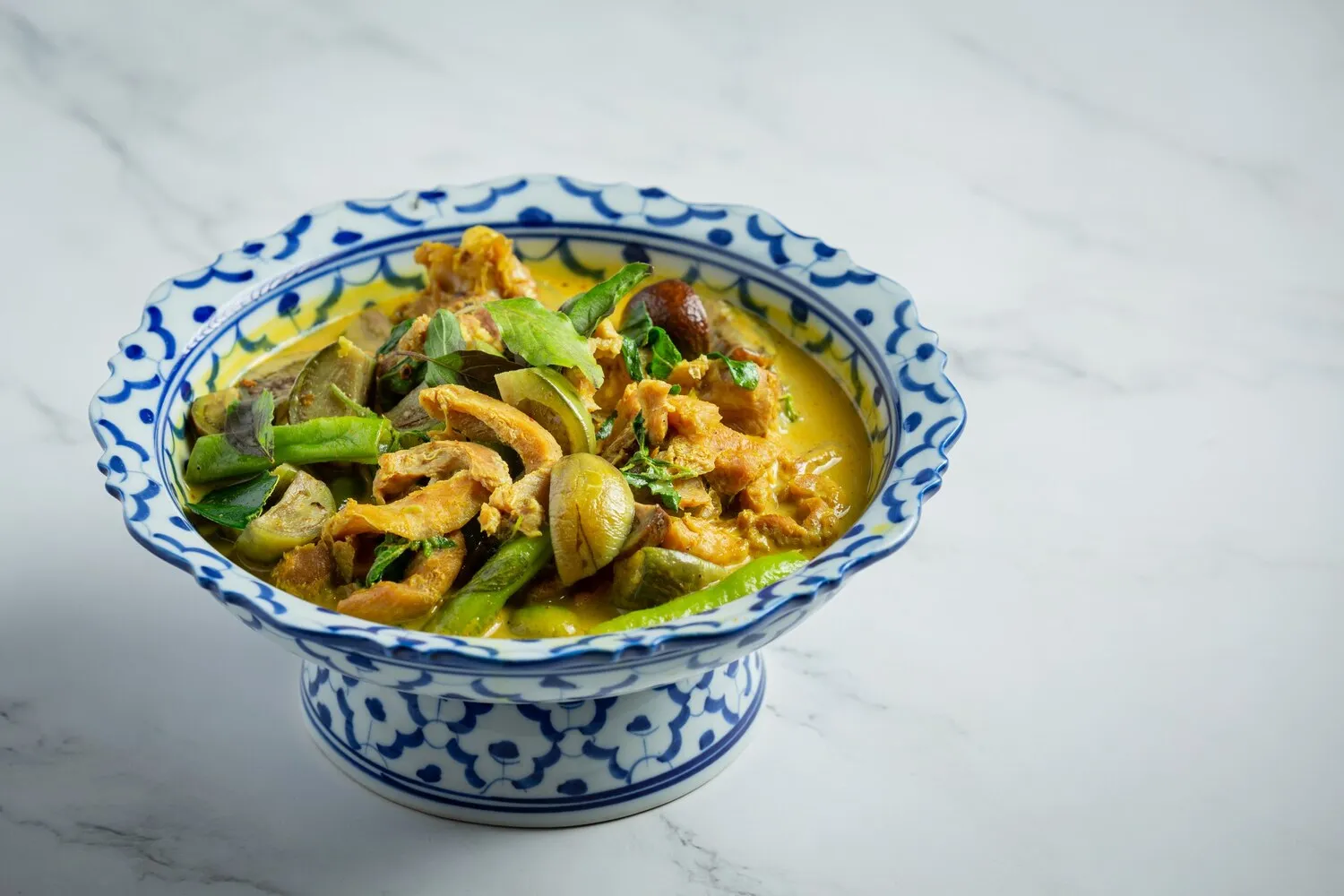
Massaman Curry
A rich, relatively mild Thai curry dish. With potatoes, onions, peanuts and your choice of protein (chicken, beef, tofu, or shrimp).
Nutrition Facts
* The % Daily Value (DV) tells you how much a nutrient in a serving of food contributes to a daily diet. 2,000 calories a day is used for general nutrition advice.
Massaman curry is believed to have originated in the 17th century at the royal court of Ayutthaya, influenced by Persian traders who brought spices and culinary techniques. It reflects a fusion of Persian, Indian, and Malay flavors adapted to Thai ingredients.
Massaman curry holds a special place in Thai cuisine, often associated with special occasions and celebrations due to its rich and complex preparation. It's a symbol of cultural exchange and adaptation.
Royal Cuisine Influence
Due to its historical ties to the royal court, Massaman curry is often considered a more refined and elevated Thai dish.
Religious Celebrations
While not specifically tied to one religion, Massaman curry is often served during celebrations where diverse groups gather, reflecting its inclusive nature.
Culinary Adaptation
The dish highlights Thailand's unique ability to adapt foreign influences into its own distinct culinary identity, resulting in a harmonious blend of flavors.
Massaman curry boasts a complex, rich flavor profile that is both sweet and savory, with warming spices and a creamy coconut milk base.
The flavor profile is driven by a combination of Thai chili peppers, galangal, lemongrass, coriander, cumin, cardamom, cinnamon, cloves, nutmeg, bay leaves, and often star anise. These spices create a warm, aromatic foundation. Coconut milk adds richness and sweetness, while tamarind paste provides a touch of sourness. Palm sugar contributes sweetness. The potatoes, onions, and peanuts contribute to the dish's hearty texture and nutty flavor. Protein, such as chicken, beef, tofu, or shrimp, adds a savory element to balance the sweet and spice notes.
Spice Blending
Roasting the whole spices before grinding them enhances their aroma and flavor complexity. Use fresh spices whenever possible.
Coconut Milk
Use full-fat coconut milk for the richest and creamiest results. The initial extraction of coconut milk is best for the base, while the thicker second extraction is ideal for finishing the dish.
Tamarind Paste
Adjust the amount of tamarind paste to achieve the desired balance of sweet and sour. Taste as you go and add more if needed.
Peanut Preparation
Use roasted, unsalted peanuts for the best flavor and texture. Some recipes call for grinding the peanuts into a paste, while others use them whole.
Explore additional Curry dishes and restaurants
Explore CurryDiscover top dining spots and culinary experiences in Bregenz.
Explore BregenzLearn more about the food culture, restaurant scene, and culinary heritage of Austria.
Explore Austria